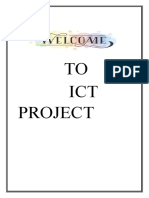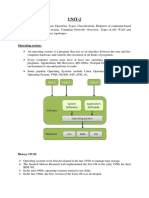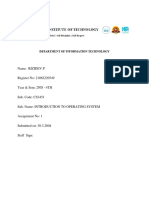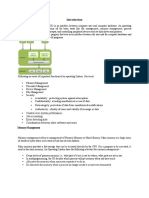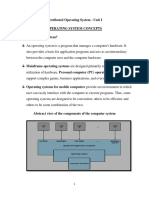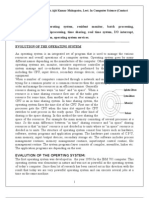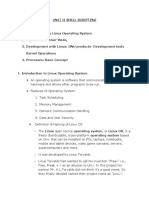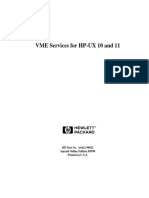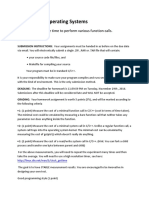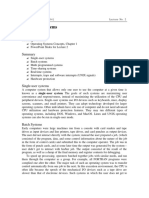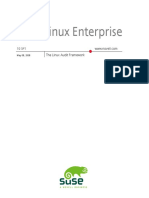0% found this document useful (0 votes)
24 views17 pagesOperating System Unit-1
An Operating System (OS) serves as an interface between users and hardware, managing processes, resource allocation, and file management to provide an efficient environment for program execution. Key functions include security, memory management, processor management, and device management, with various types of operating systems such as batch, time-sharing, distributed, network, and real-time systems, each with their own advantages and disadvantages. Additionally, protection mechanisms are essential to safeguard resources and ensure secure access for multiple users in a multiprogramming environment.
Uploaded by
gdsahi90Copyright
© © All Rights Reserved
We take content rights seriously. If you suspect this is your content, claim it here.
Available Formats
Download as PDF, TXT or read online on Scribd
0% found this document useful (0 votes)
24 views17 pagesOperating System Unit-1
An Operating System (OS) serves as an interface between users and hardware, managing processes, resource allocation, and file management to provide an efficient environment for program execution. Key functions include security, memory management, processor management, and device management, with various types of operating systems such as batch, time-sharing, distributed, network, and real-time systems, each with their own advantages and disadvantages. Additionally, protection mechanisms are essential to safeguard resources and ensure secure access for multiple users in a multiprogramming environment.
Uploaded by
gdsahi90Copyright
© © All Rights Reserved
We take content rights seriously. If you suspect this is your content, claim it here.
Available Formats
Download as PDF, TXT or read online on Scribd
/ 17



